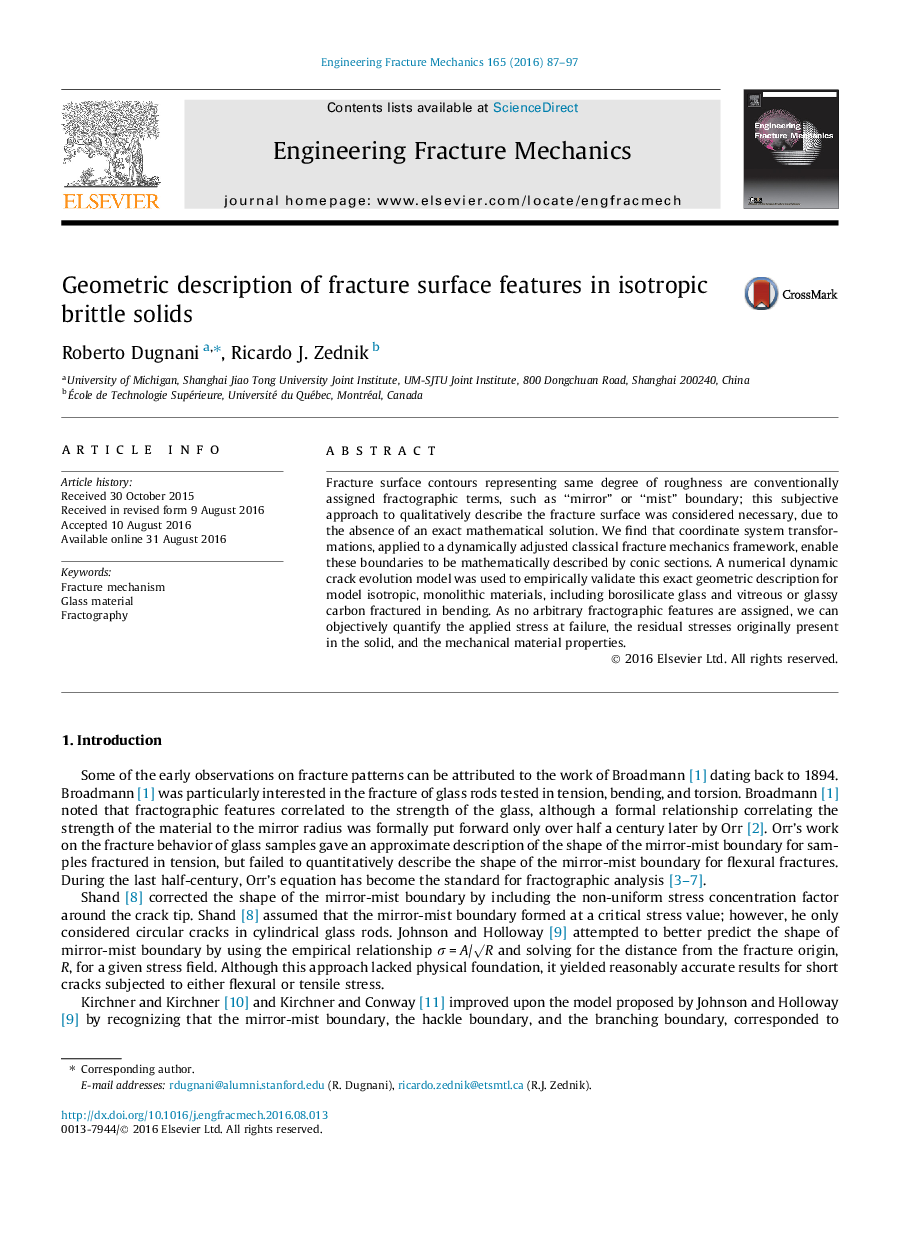| Article ID | Journal | Published Year | Pages | File Type |
|---|---|---|---|---|
| 5014160 | Engineering Fracture Mechanics | 2016 | 11 Pages |
Abstract
Fracture surface contours representing same degree of roughness are conventionally assigned fractographic terms, such as “mirror” or “mist” boundary; this subjective approach to qualitatively describe the fracture surface was considered necessary, due to the absence of an exact mathematical solution. We find that coordinate system transformations, applied to a dynamically adjusted classical fracture mechanics framework, enable these boundaries to be mathematically described by conic sections. A numerical dynamic crack evolution model was used to empirically validate this exact geometric description for model isotropic, monolithic materials, including borosilicate glass and vitreous or glassy carbon fractured in bending. As no arbitrary fractographic features are assigned, we can objectively quantify the applied stress at failure, the residual stresses originally present in the solid, and the mechanical material properties.
Related Topics
Physical Sciences and Engineering
Engineering
Mechanical Engineering
Authors
Roberto Dugnani, Ricardo J. Zednik,
